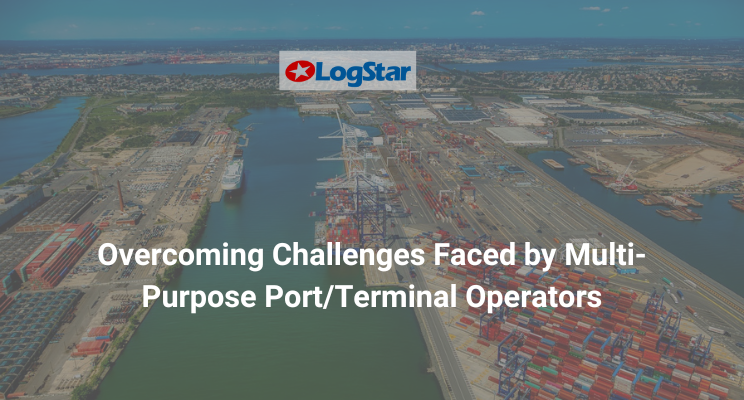
Multi-purpose port terminals are an essential part of the global supply chain, handling a wide range of cargo including containers, bulk goods, and breakbulk cargo, etc. However, operating a multi-purpose terminal comes with its own set of unique challenges that need to be overcome to ensure efficient and effective operations. These ports typically handle a large volume of cargo, often from multiple shipping lines and carriers, and serve as a hub for cargo distribution to other destinations. As a result, multi-purpose port/terminal operators must navigate a wide range of challenges to ensure the efficient and timely movement of goods.
One of the biggest challenges faced by multi-purpose terminals is limited space. As terminals handle various types of cargo, it can be difficult to efficiently store and handle different goods in a limited area. This can lead to congestion and delays, which can have a knock-on effect on the entire supply chain.
Another challenge is the complexity of logistics operations. Handling and storing different types of cargo requires specialized equipment and trained personnel. This can increase the cost and complexity of logistics operations, making it difficult for terminals to compete with more specialized facilities.
Security and safety concerns are also a significant challenge for multi-purpose terminals. Handling a variety of cargo, including hazardous materials, can pose a risk to the safety and security of workers and the surrounding community. This requires terminals to have robust security measures in place to ensure the safe and secure handling of all cargo.
Despite these challenges, there are solutions and strategies that multi-terminal port operators can use to improve their operations. One effective strategy is to implement a Port Community System (PCS). A PCS is a digital platform that connects all stakeholders in the port ecosystem, including shipping companies, freight forwarders, customs authorities, and other government agencies. It enables them to share information and collaborate in real-time, improving the visibility and predictability of cargo movements.
Another strategy is to invest in new technologies, such as Multi-Purpose Terminal Operating System (MPTOS) to automate, streamline processes and improve efficiency. This can include automating cargo handling and logistics, implementing real-time tracking systems, and using data analytics to optimize operations.
LogStar Multi-Purpose Terminal Operating System (MPTOS) is a software system designed to manage the various functions and activities of a multi-purpose terminal. It helps the port operators to coordinate and optimize the handling, storage, and movement of these different cargo types, as well as managing the various terminal operations such as yard management, equipment management, and gate operations.
LogStar MPTOS provides a range of functionality, including:
- Cargo handling and storage management: This includes the tracking, handling and storage of cargo and containers, as well as the management of yard and storage areas.
- Equipment management: This includes the tracking and management of terminal equipment such as cranes, tractors, and vehicles.
- Gate operations: This includes the management of truck and vessel traffic in and out of the terminal, as well as the management of gate transactions and customs clearance.
- Terminal management: This includes the management of terminal resources, such as personnel and equipment, as well as the management of terminal finances and performance metrics.
- Interfacing with other systems: This includes the integration of the MPTOS with other systems such as transportation management systems (TMS), enterprise resource planning (ERP) systems, and Port Community Systems (PCS).
It also includes features like real-time monitoring and control of the cargo and equipment movement, inventory management, and reporting to improve the efficiency and performance of the terminal.
In conclusion, multi-purpose port terminals play a vital role in the global supply chain, but they are not without their challenges. From limited space to weather-related issues to security and safety concerns, these terminals face a range of obstacles. However, by implementing new equipment, technologies and sustainable practices, multi-purpose terminals are working to overcome these challenges and continue to support the global economy.
